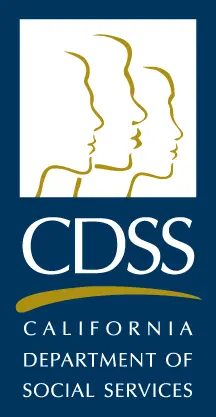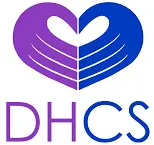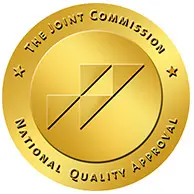Dual Diagnosis Treatment Centers In Orange County
The Path To Sound Mind, Body and Soul
Orange County Premier Behavioral Health Services
What Is Dual Diagnosis?
Co-occurring mental and/or behavioral disorders are common among people who suffer from substance use disorders. A medical professional may give patients who suffer from these co-occurring disorders what is known as a dual diagnosis. There were 9.5 million adults in the United States who experienced mental illness and substance addiction in 2019, according to the National Survey on Drug Use and Health (NSDUH).
In order to treat dual diagnoses effectively, a treatment plan must address both disorders simultaneously. Dual diagnosis treatment in Costa Mesa for co-occurring disorders is crucial for recovery, which can help the patient go on to successfully living a healthy and fulfilling life.
What Are Some Common Mental Health Disorders Found In Dual Diagnoses?
In many cases, mental health disorders related to addiction are, in fact, the actual root cause of the addiction itself. Considering all symptoms of behavioral disorders and mental health conditions should be part of an effective recovery plan.

- These disorders are commonly associated with substance abuse and subsequent dual diagnoses:
- Anxiety
- Attention-Deficit Hyperactivity Disorder (ADHD)
- Bipolar Disorder
- Borderline Personality Disorder (BPD)
- Depression
- Obsessive-Compulsive Disorder (OCD)
- Post-Traumatic Stress Disorder (PTSD)
- Schizophrenia
Experts estimate that roughly half of the 5 percent of Americans diagnosed with attention deficit hyperactivity disorder (ADHD) also struggle with addiction and substance abuse. Meanwhile, approximately one-third of people diagnosed with depression will develop, or already have, concurrent substance use disorders. According to another study, anxiety disorder and addiction are co-occurring disorders around half of the time.
It is not completely clear why having one disorder increases the risk of having another, but it has been agreed that both disorders should be treated with equal recognition and concern.
Symptoms of Co-Occuring Disorders
A dual diagnosis may manifest in various ways for different individuals, based on the type of substance being abused and how severe the co-occurring condition is.
The best people to consult for a dual diagnosis are addiction treatment specialists with an extensive psychiatric background. Both an evaluation specialist and an intake counselor at a dual diagnosis drug rehab center will evaluate the severity of a patient’s co-occurring mental illness and substance use disorder before creating an individualized treatment plan.
- Warning signs of a dual diagnosis can include:
- Lack of attention to hygiene
- Suicidal ideation
- Impulsiveness
- Unable to manage finances
- Poor work or school performance
- Delusional thoughts
- Inability to manage daily tasks and responsibilities
- Social isolation
The best people to consult for a dual diagnosis are addiction treatment specialists with an extensive psychiatric background. Both an evaluation specialist and an intake counselor at a dual diagnosis drug rehab center will evaluate the severity of a patient’s co-occurring mental illness and substance use disorder before creating an individualized dual diagnosis treatment program.
How Is Dual Diagnosis Treated?
Only when a medical professional makes a diagnosis can treatment truly begin. When patients suffer from both a substance abuse disorder and a mental health issue, their withdrawal symptoms are usually more severe, more persistent, and resistant to treatment than a single diagnosis for either co occurring disorder on its own. As a result, effective treatment for a dual diagnosis can be understandably challenging.
Throughout the course of the rehabilitation program, rehab facilities can include a number of therapies, medications, and activities. Patients at outpatient treatment centers are also likely to participate in group and individual therapy sessions.

In order to provide an effective recovery plan the patient must work on both disorders at the same time instead of individually. Treating both disorders concurrently has been known to have positive synergistic-like effects in a patient’s recovery. To keep dual diagnosis patients committed to treatment, an effective recovery plan should also offer incentives and rewards for incremental improvement.
A residential treatment program may be beneficial for patients with severe mental illnesses or dual diagnoses as well as those who have used drugs and alcohol heavily. While receiving outpatient mental health treatment and therapy, patients can continue to work a job, attend classes, or take care of their family as needed.
It is possible for treatment of this complex condition to be complicated by a dual diagnosis, but with better education and understanding, this complicated condition can be conquered.
Are There Complications With Dual Diagnosis Treatment in Costa Mesa?
Treating dual diagnosis patients can be challenging for several reasons. The most obvious difficulty with successful treatment occurs because of the nuances in dealing with two disorders at the same time. If the two conditions are not addressed properly, recovery will be more challenging and result in a less desirable care outlook and a higher risk of adverse health effects.
Another factor in dual diagnosis treatment complication is the cooperation, or lack thereof, of the patient. Since psychiatric illnesses can change a patient’s perspectives and perceptions, many people with dual diagnosis ignore their treatment and disregard medical treatment.
With the combination of willing engagement from the patient and an effective recovery strategy by a trained mental health professional, dual diagnosis can eventually be treated.
Find Your Orange County Dual Diagnosis Treatment Center
People can become addicted to drugs or alcohol before they are diagnosed with a mental illness, or they can become addicted afterward. Regardless of which occurred first, the importance of creating a personalized treatment plan that targets both disorders at the same time rather than a plan that treats them separately cannot be overstated. In the case of a dual diagnosis, partial hospitalization (PHP) or intensive outpatient treatment (IOP) can be not only beneficial in the short term, but life-saving in the long-term.
A high level of attention and care is provided to patients undergoing outpatient rehab for co-occurring disorders found in dual diagnoses. Generally, both mental health and addiction professionals are often needed for extensive mental health and substance abuse treatment.
Choosing the dual diagnosis treatment center is essential to recovery so when searching for the right place for treatment, try to locate one that specializes in the relevant type of addiction and co-occurring disorder.
- Consider the following essential questions that will help guide your decision:
- Before admission, will I be evaluated by a certified mental health therapist or physician?
- Is one of my disorders considered a separate illness, or are both considered a part of the same medical condition?
- Is there a plan in place in the event that I relapse during treatment?
- Is personalized treatment available for all patients?
- Are after-care referral services offered?
Acera Health in Orange County matches the above criteria and is available to help treat those with potential co-occurring disorders. Contact us in Costa Mesa today for a consultation and let us help you live a healthier, happier life.

Reach Out Today
To learn more about if Acera Health is right for you, and what to expect, contact us Today!
"*" indicates required fields
3100 Bristol St. Suite # 250 Costa Mesa, CA 92626
info@acerahealth.com
DHCS license number: MHBT220400
DHCS license expiration date: July 20, 2024
DSS license number: 306006131 & 306006072



